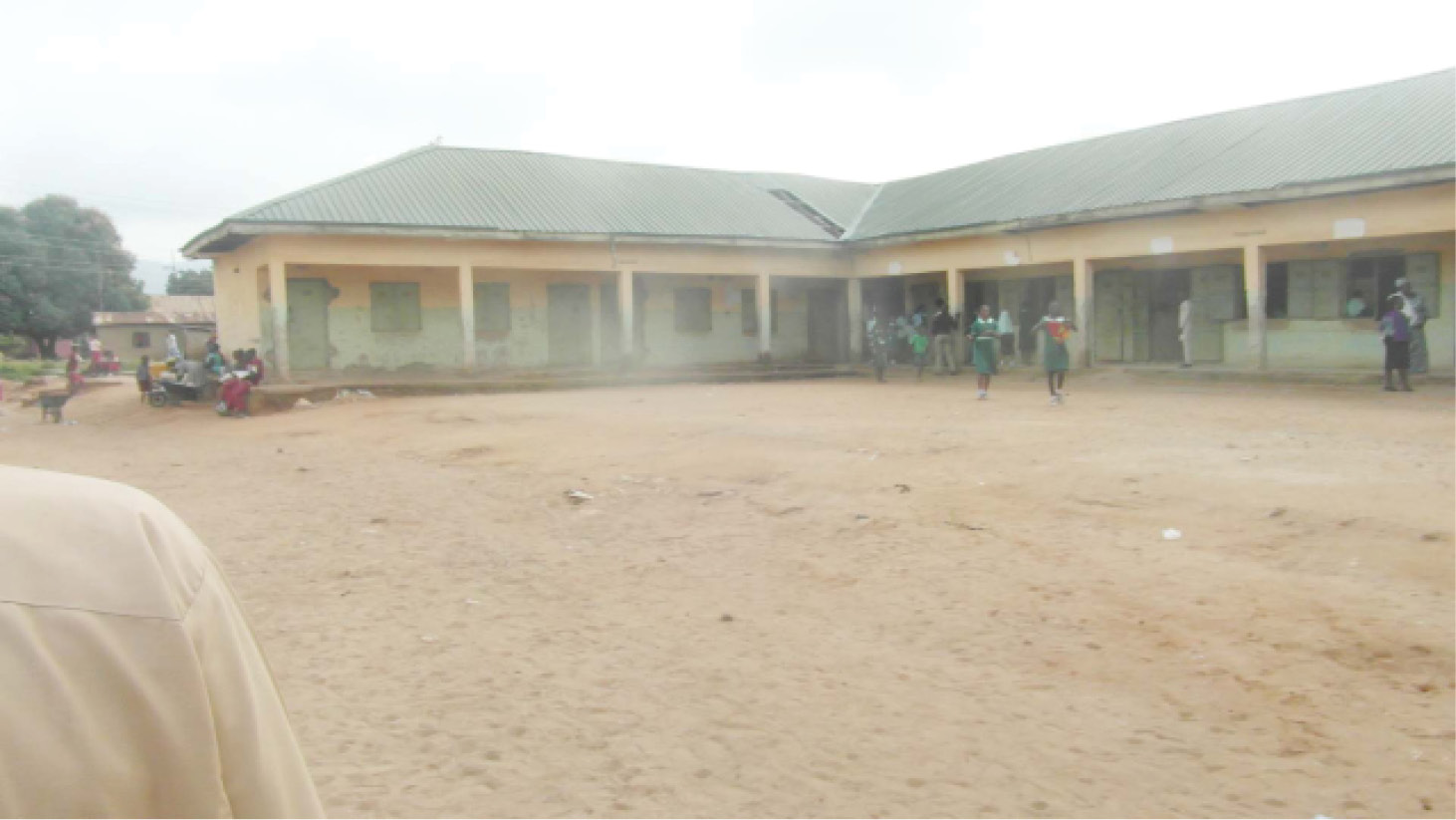Schools too full, there’s no learning
It is a school day. The chatter of children walking to school fills the streets of Gbagalape. They are distinctly dressed, one group in two shades of green, the other group in two shades of red. They are students of a school run by the local public education authorities of Abuja Municipal Area Council in […]

Torn roof over heads of pupils at Gbagalape school-1
It is a school day. The chatter of children walking to school fills the streets of Gbagalape. They are distinctly dressed, one group in two shades of green, the other group in two shades of red.
They are students of a school run by the local public education authorities of Abuja Municipal Area Council in Gbagalape.
And it is that school from its surrounds to its classrooms that has the parents of Gbagalape worried.
At the primary school, it is lesson time. From outside, everything within the school premises is visible: its perimeter fence has been knocked down in portions. It shares the space with personal residences, builders who have encroached onto land apportioned for the school.
Its classes are few, but each is packed with children in shades of green. Nearly 100 fill the room. There are a few desks and chairs in the room, each packed with children pressed tight against one another. All others are seated on the floor and classes go on regardless.
The primary students have just until 12.30pm to end all lessons of the day, then they have to leave school. The secondary students will begin classes in the same rooms by 1pm, a school teacher of the school said.
“This is the only school in the FCT that runs shifts,” a parent complains.
Gbagalape is a typical urban slum, tucked to one side of the giant Nyanya crossover. Over the years, it has attracted surging populations who can’t afford the cost of inner-city living. It is sprawling, cloaked in urban poverty, bereft of amenities, teeming with populations.
“We have a primary school but the classes are not enough for the pupils,” says Kenneth Rabo, the village head of Gbagalape. Each class is too congested, students are too full. If such a thing is happening, you can see that learning cannot take place. The children cannot learn well. They don’t even have desks. They are sitting on the floor.”
It is easy to see that. Anyone passing by can see clean through the fence that doesn’t exist and the broken-down gates.
On a typical school day, teachers shout at the top of their lungs to get the attention of nearly 100 children in one packed class.
The school is also unique, in the eyes of Gbagalape residents, for the about the only school that runs classes in shifts 8am to 12.30pm for primary, 1pm to 5pm for secondary.
“The hours are not enough, and it is really affecting the children,” says Rabo.
There is no secondary school in the area. Once students get to JSS3, they must commute or trek anything to find their way to other districts to attend secondary school.
The schools can be as far as a secondary school in Nyanya or Aso. And for parents who are financially handicapped, it means “the children might be trekking every day,” Rabo explains.
So, students in class share play space with residents at home.
The United Nations Convention on the Right of the Child, which Nigeria, has signed up to, mandates that children have a “right to stand of living good enough” to meet their needs.
The children of Gbagalape still struggle to keep their learning space just for learning.
